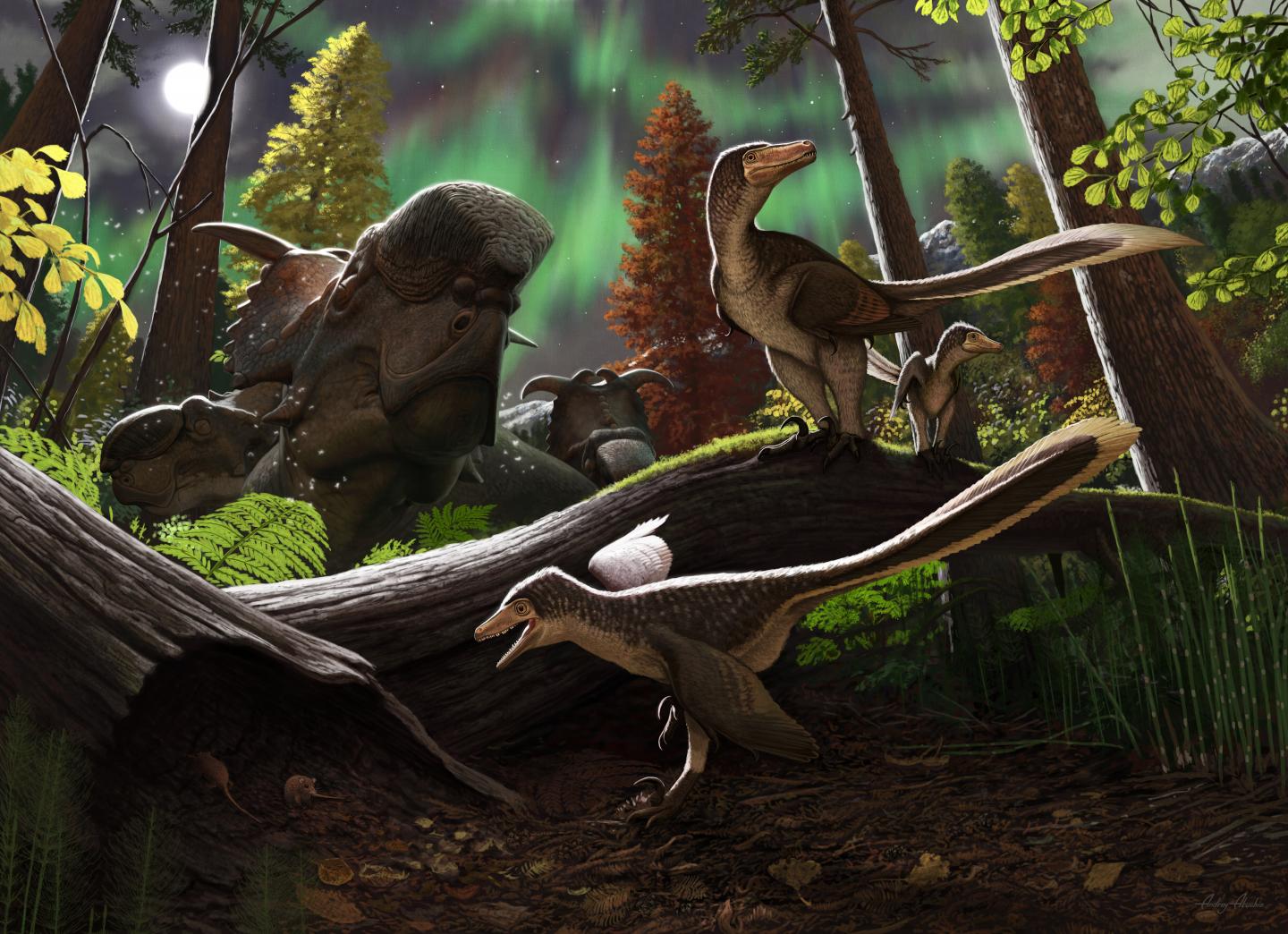Bureau research featured in Smithsonian Magazine's Top Ten Dinosaur Discoveries of 2020

Credit: Andrey Atuchin
For years, scientists debated whether dinosaurs stayed in polar environments or migrated into warmer regions during the winter. Researchers have now found that dinosaurs, despite being cold-blooded creatures, remained in polar habitats year-round. Using a rare find of remains from a dromaeosaurid, Bureau Research Scientist Peter Flaig and colleagues found that these raptor-like dinosaurs overwintered and nested in polar regions. The research was published in PLOS ONE and featured in Smithsonian Magazine's article, “The Top Ten Dinosaur Discoveries of 2020,” highlighting importance of this discovery.
The discovery was made possible by the finding of an uncommon fossil: a dromaeosaurid jaw bone. Previous fossil evidence of this dinosaur has been limited to detached teeth. These are also the first non-tooth remains of this dinosaur family found in the Arctic. The jaw bone gave researchers substantial clues to the environment of these ancient animals. A variety of existing evidence—including study of the structure, chemistry, and movements of the bones—demonstrates that these dinosaurs had the necessary adaptation to survive harsh winters in the Arctic and would not have needed to migrate to warmer latitudes.
The polar findings are corroborated by research from other authors, including the discovery that polar dinosaurs slowed their growth during the winter, and that a newly discovered species lived exclusively in colder habitats.